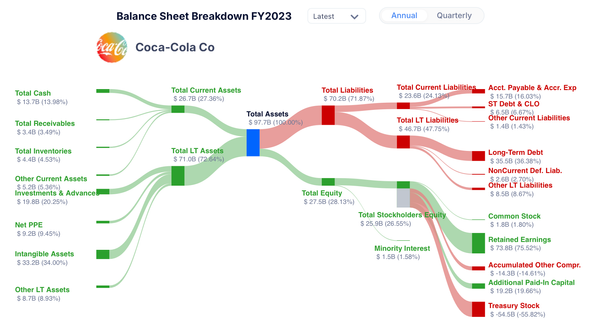Unpacking the Chip: A journey through the semiconductor value chain
Read how companies like NVIDIA and Qualcomm innovate in chip design while outsourcing manufacturing to specialized foundries.

Fabless: The collaborative approach to chip design
The fabless model revolutionizes semiconductor design by allowing companies to focus solely on chip innovation while outsourcing manufacturing to specialized foundries. This approach not only fosters innovation but also alleviates the immense costs of owning fabrication facilities.
Fabless chip designers
Leading fabless companies such as NVIDIA, AMD, Qualcomm, Broadcom, and MediaTek are at the forefront of semiconductor innovation. They specialize in designing advanced chips for specific applications - think high-performance GPUs, 5G modems, and AI accelerators - pushing the limits of what chips can achieve. Tech giants like Apple, Alphabet, Meta, and Microsoft are also entering the fabless space to create custom chips that enhance their products and services.
By outsourcing production to foundries, fabless companies can focus on research and development while swiftly adapting to market demands. However, this reliance on foundries does introduce risks, especially during demand spikes or supply chain disruptions.

Foundries: The backbone of manufacturing
Foundries are the cornerstone of semiconductor manufacturing, equipped with the massive facilities and specialized equipment needed to produce chips. Key players like TSMC, Samsung, GlobalFoundries, SMIC, and UMC have invested billions in advanced nodes (e.g., 5nm, 3nm) to maximize processing density and power efficiency. While foundries don’t design chips themselves, they work from the digital blueprints provided by fabless designers.
To maintain a competitive edge, foundries establish close partnerships with suppliers of high-precision equipment and materials. Companies like ASML, Lam Research, and Applied Materials provide the essential tools for intricate processes such as photolithography, where billions of transistors are etched onto silicon wafers. Even a minor error in this stage can compromise a chip's functionality.
Testing & packaging
Once chips are manufactured, they undergo rigorous testing to ensure reliability and performance. Testing companies like Teradyne, Advantest, and ASE Technology employ specialized tools to examine each chip’s functionality and identify defects. Stress tests simulate real-world conditions, detecting weaknesses that could lead to failures in consumer devices.
After testing, packaging companies such as Amkor Technology and JCET encapsulate the chips in protective enclosures. This packaging is vital for safeguarding against environmental damage like dust or moisture, ensuring long-term durability. Without these crucial steps, even the most advanced chips could become unusable in no time.
Supplier layer: The essential support network
The supplier layer plays a critical role for both fabless companies and integrated device manufacturers (IDMs), providing essential tools, software, and raw materials that underpin the semiconductor value chain.
Design software and IP
Chip designers heavily rely on Electronic Design Automation (EDA) tools and intellectual property (IP) cores to streamline their processes. Companies like Synopsys, Cadence, Arm, and Siemens offer software that enables designers to simulate and validate chip architectures before production. For example, Arm licenses CPU and GPU designs used in billions of mobile devices worldwide. EDA tools significantly reduce risk by allowing designers to troubleshoot virtually, minimizing potential errors during manufacturing.
Manufacturing equipment and ancillary services
Foundries require specialized manufacturing equipment to produce chips at scale. Companies like ASML, Applied Materials, Lam Research, and Tokyo Electron dominate this space, supplying lithography, deposition, and etching machinery essential for chip fabrication. ASML’s EUV (Extreme Ultraviolet) lithography machines, for instance, are crucial for producing chips with extremely small transistor sizes.
Raw materials and components
The raw materials layer includes suppliers of high-purity silicon wafers, gases, and chemicals essential for chip production. Companies like SUMCO and Shin-Etsu produce the silicon wafers, while ZEISS, FUJIFILM, Linde Group, and Air Liquide supply the necessary chemicals and gases for etching and doping. The materials sector is vital, as even trace impurities can lead to defects, making the uninterrupted supply of ultra-pure resources critical for maintaining production quality.
The integrated model: A different approach
In contrast to the fabless model, Integrated Device Manufacturers (IDMs) manage both chip design and production in-house. Companies like Intel, Texas Instruments, Micron, Samsung, and SK Hynix benefit from greater control over quality and the supply chain. By owning their fabrication facilities, IDMs can innovate rapidly and maintain tighter quality control.
While IDMs enjoy the advantages of vertical integration, they still depend on suppliers for raw materials and advanced manufacturing equipment. Companies like ASML and Applied Materials remain indispensable, even for IDMs managing their production processes.
Bringing it all together: The semiconductor value chain in action
The interconnectedness of the semiconductor value chain is vital for delivering innovative technology. Fabless designers drive market advancements, while foundries transform designs into tangible products. Testing and packaging companies ensure quality and durability, and a robust network of suppliers supports each step.
Imagine NVIDIA, a leading fabless chip designer, embarking on a journey to develop a new high-performance GPU. Here’s how the entire value chain comes into play, step by step:
- Design and Development: NVIDIA's engineers use EDA tools from Synopsys and Cadence to design the chip, possibly licensing IP from Arm to enhance functionality.
- Manufacturing Resources: Once the design is finalized, NVIDIA outsources manufacturing to TSMC, leveraging their state-of-the-art facilities and advanced nodes like 5nm or 3nm.
- Production Begins: TSMC relies on suppliers like Shin-Etsu and SUMCO for high-quality silicon wafers and companies like Air Liquide for specialty gases.
- Assembly and Testing: After fabrication, chips are sent to OSAT providers like Amkor Technology for packaging and testing, ensuring they meet NVIDIA's specifications.
- Integration: NVIDIA supplies GPUs to IDMs like Samsung and SK Hynix, which integrate these chips with memory modules to create final products.
- Distribution: Once manufactured, the GPUs are distributed to electronics retailers, ready to empower gamers, researchers, and AI developers alike.
In this intricate ecosystem, each layer - from design to manufacturing to packaging - plays a critical role in delivering the technology that drives our digital world. The semiconductor industry thrives on collaboration and interdependence, showcasing a complex yet resilient framework that meets the ever-growing demands of modern technology.





